INSTITUT SUPERIEUR D'ANTHROPOLOGIE
INSTITUTE OF ANTHROPOLOGY
ONLINE COURSES / COURS A DISTANCE
FALL TERM : OCTOBER 2014
REGISTER NOW
GRECE – 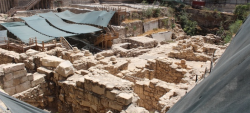
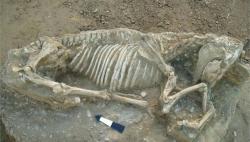 Chios - Archaeological excavation of the area “Psomi” in the island of Chios, northeastern Greece, revealed parts of an ancient necropolis. The ancient Greek necropolis dates back to the 7th and 6th century BC. Archaeologists found earthenware containers sealed with stone, most of them undecorated while others bear incised geometric decoration. The bodies were placed on sea pebbles, in a contracted position. The excavation also revealed several unadorned clay Klazomenian sarcophagi and a stone sarcophagus. Among the most interesting findings is the complete remains of a horse, the first that comes to light in the northeastern Aegean Sea. The horse, which was buried in rest position, was transferred to the Archaeological Museum of Chios. It is the earliest organized necropolis that has been found until today in Chios and further excavations are expected to provide valuable information on the historic topography of the ancient city.
Chios - Archaeological excavation of the area “Psomi” in the island of Chios, northeastern Greece, revealed parts of an ancient necropolis. The ancient Greek necropolis dates back to the 7th and 6th century BC. Archaeologists found earthenware containers sealed with stone, most of them undecorated while others bear incised geometric decoration. The bodies were placed on sea pebbles, in a contracted position. The excavation also revealed several unadorned clay Klazomenian sarcophagi and a stone sarcophagus. Among the most interesting findings is the complete remains of a horse, the first that comes to light in the northeastern Aegean Sea. The horse, which was buried in rest position, was transferred to the Archaeological Museum of Chios. It is the earliest organized necropolis that has been found until today in Chios and further excavations are expected to provide valuable information on the historic topography of the ancient city.
http://greece.greekreporter.com/2014/07/21/ancient-necropolis-revealed-in-chios/?
TURQUIE – 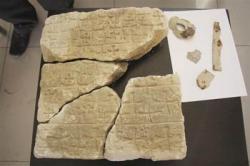 Marouta - Dans les ruines de l’église Sourp Asvadavin, Sainte Mère de Dieu, qui est située sur le Mont Mereto (Marouta) dans la province orientale de Batman, district de Sassoun, une tablette historique et quelques artefacts ont été découverts. La tablette et les objets ont été remis à la direction du musée de Batman. Les ruines de l’église arménienne, dont certaines parties ont été endommagées en 2012, ont été nettoyées par le président de l’Association des Arméniens de Sassoun, basée à Istanbul, Aziz Dağcı, aidé de dix personnes. Ils ont découvert ces objets historiques pendant le nettoyage.
Marouta - Dans les ruines de l’église Sourp Asvadavin, Sainte Mère de Dieu, qui est située sur le Mont Mereto (Marouta) dans la province orientale de Batman, district de Sassoun, une tablette historique et quelques artefacts ont été découverts. La tablette et les objets ont été remis à la direction du musée de Batman. Les ruines de l’église arménienne, dont certaines parties ont été endommagées en 2012, ont été nettoyées par le président de l’Association des Arméniens de Sassoun, basée à Istanbul, Aziz Dağcı, aidé de dix personnes. Ils ont découvert ces objets historiques pendant le nettoyage.
http://www.collectifvan.org/article.php?r=5&id=81620
PEROU – 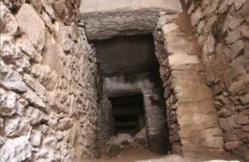 Monqachayuq /VegachayuqMoqo - A number of underground galleries, mausoleums, astronomical tables and human remains were found at the archaeological complex of Wari in Peru's central Andean region of Ayacucho, reported Jose Ochatoma, lead archaeologist of the excavation project. Research work is carried around the area, in Monqachayuq and VegachayuqMoqo sectors, where the above-mentioned vestiges were uncovered. According to Ochatoma, such remains are from the Wari culture, the first Andean empire that then took part of the Incan dominion. In this sense, Peruvian archaeologist highlighted the importance of the project and recent discoveries made in the area stretching more than 2,000 hectares. Wari culture -with its heartland in Ayacucho, located in the Peruvian south-central highlands- was one of the first empires in ancient Peru that included neighborhoods , palaces, houses and temples during the Middle Horizon (A.D. 600--1000).
Monqachayuq /VegachayuqMoqo - A number of underground galleries, mausoleums, astronomical tables and human remains were found at the archaeological complex of Wari in Peru's central Andean region of Ayacucho, reported Jose Ochatoma, lead archaeologist of the excavation project. Research work is carried around the area, in Monqachayuq and VegachayuqMoqo sectors, where the above-mentioned vestiges were uncovered. According to Ochatoma, such remains are from the Wari culture, the first Andean empire that then took part of the Incan dominion. In this sense, Peruvian archaeologist highlighted the importance of the project and recent discoveries made in the area stretching more than 2,000 hectares. Wari culture -with its heartland in Ayacucho, located in the Peruvian south-central highlands- was one of the first empires in ancient Peru that included neighborhoods , palaces, houses and temples during the Middle Horizon (A.D. 600--1000).
http://www.andina.com.pe/Ingles/noticia-new-archaeological-finds-uncovered-at-wari-complex-in-peru-515544.aspx
ROYAUYME UNI – 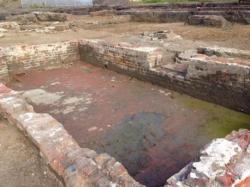 Waltham Forest - The remains of a 14th century medieval manor house are being excavated beneath Walthamstow Stadium's former car park prior to development of the site. The manor house, known as Salisbury Hall, was demolished in the 1950s. Salisbury Hall was one of five manor houses in the area built during the 14th century. It was controlled by Henry VIII during his reign and later by Queen Elizabeth I, whose tutor Sir Roger Ascham lived in there for £20 a year. The manor had various owners up until the Second World War, when considerable damage was caused to the house when the area was heavily bombed.
Waltham Forest - The remains of a 14th century medieval manor house are being excavated beneath Walthamstow Stadium's former car park prior to development of the site. The manor house, known as Salisbury Hall, was demolished in the 1950s. Salisbury Hall was one of five manor houses in the area built during the 14th century. It was controlled by Henry VIII during his reign and later by Queen Elizabeth I, whose tutor Sir Roger Ascham lived in there for £20 a year. The manor had various owners up until the Second World War, when considerable damage was caused to the house when the area was heavily bombed.
http://www.guardian-series.co.uk/news/wfnews/11357092.Remains_of_medieval_manor_house_excavated_at_dog_stadium_car_park/
CANADA – Pointe au Père - Parks Canada's Underwater Archaeology Service (UAS) is currently carrying out the second phase of its archaeological research project on the wreck of the Empress of Ireland. The first phase of this project, conducted last May, served to map the debris field of the wreck using a ship and underwater drone equipped with sidescan sonars and magnetometers. The second phase, now underway, aims at gathering data directly on the wreck through a number of dives and a remote-controlled vehicle. As such, this project represents the first systematic archaeological investigation of the wreck and its debris field.
http://www.digitaljournal.com/pr/2069178
FRANCE –  Manoir du Catel - Dans le cadre du chantier de fouilles mené par le CHAM (Chantiers, Histoire et Architecture Médiévales)* sous le contrôle de la DRAC de Haute-Normandie et du service régional d’archéologie, l’archéologue Thomas Guérin a mis au jour le pont médiéval du 13ème siècle donnant accès à la porte fortifiée du Manoir du Catel. Cette découverte est d’autant plus exceptionnelle que l’état de conservation du pont médiéval est remarquable. Selon Thomas Guérin, « la mise au jour du pont d’accès, de la troisième tour et des contreforts jette, une nouvelle lumière sur une véritable fortification médiévale de l’abbaye de Fécamp ».
Manoir du Catel - Dans le cadre du chantier de fouilles mené par le CHAM (Chantiers, Histoire et Architecture Médiévales)* sous le contrôle de la DRAC de Haute-Normandie et du service régional d’archéologie, l’archéologue Thomas Guérin a mis au jour le pont médiéval du 13ème siècle donnant accès à la porte fortifiée du Manoir du Catel. Cette découverte est d’autant plus exceptionnelle que l’état de conservation du pont médiéval est remarquable. Selon Thomas Guérin, « la mise au jour du pont d’accès, de la troisième tour et des contreforts jette, une nouvelle lumière sur une véritable fortification médiévale de l’abbaye de Fécamp ».
http://www.paris-normandie.fr/detail_article/articles/1069187/actualites+societe/une-importante-decouverte-archeologique-au-manoir-du-catel-en-seine-maritime#.U86Q4Pl_vVQ
ROYAUME UNI – 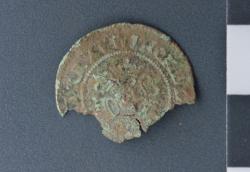 Leiston Abbey - Archaeologists at a dig at Leiston Abbey in Suffolk have discovered what they believe is a medieval poker chip. Maiya Pina-Dacier, community manager with Dig Venture's which is running the dig, told the BBC that the chip, known as the Nuremberg jetton, “was used as an informal currency and it is evidence people were gaming." Experts also discovered a metal curse tablet. First made in the Roman era, these were used to extract revenge on individuals believed to have been up to no good such as thieves and robbers. Archaeologists hope to unroll the tablet and discover the nature of the curse. Given that the 'poker chip' was discovered nearby, we're hoping that it's a disgruntled ancient hoping for vengeance after his aces were cracked by 7-2.
Leiston Abbey - Archaeologists at a dig at Leiston Abbey in Suffolk have discovered what they believe is a medieval poker chip. Maiya Pina-Dacier, community manager with Dig Venture's which is running the dig, told the BBC that the chip, known as the Nuremberg jetton, “was used as an informal currency and it is evidence people were gaming." Experts also discovered a metal curse tablet. First made in the Roman era, these were used to extract revenge on individuals believed to have been up to no good such as thieves and robbers. Archaeologists hope to unroll the tablet and discover the nature of the curse. Given that the 'poker chip' was discovered nearby, we're hoping that it's a disgruntled ancient hoping for vengeance after his aces were cracked by 7-2.
http://www.bluffeurope.com/poker-news/en/Archaeologists-Find-Ancient-Poker-Chip-_14445.aspx?
ESPAGNE -  Betanzos - On one of the granite walls of Santiago church in the small town of Betanzos, a small previously unintelligible inscription five metres above ground kept historians and epigraphists, or people who study ancient inscriptions, baffled for decades. Researchers working for a private association called the Gaelaico Project now believe they've finally deciphered what it reads: "An Ghaltacht" or "Gaelic-speaking area". "If our interpretation is right, the inscription isn't related to religious matters, but rather to the language that was spoken in Galicia at the time," Proxecto Gaelaico head Martín Fernández Maceiras told local daily La Voz de Galicia. "It seems logical that the inscription was made while the church was being built (in the 14th century)." Up to now, Galicia, along with Asturias and northern Portugal, have been informally considered part of the ancient Celtic nations (Ireland, Scotland, Wales, Brittany, Isle of Man and Cornwall) due to cultural and historical reasons rather than because of written proof. Although researchers are hoping to get a second opinion from expert epigraphists on whether the inscription does indeed read “Gaelic-speaking area”, the chances of it being the first written evidence of Galicia’s Celtic past are high. Despite the dominance of Latin, there are plenty of Gaelic traits still present in Galicia,” James Duran, academic expert on minority languages at the US's Stanford University, told La Voz de Galicia.
Betanzos - On one of the granite walls of Santiago church in the small town of Betanzos, a small previously unintelligible inscription five metres above ground kept historians and epigraphists, or people who study ancient inscriptions, baffled for decades. Researchers working for a private association called the Gaelaico Project now believe they've finally deciphered what it reads: "An Ghaltacht" or "Gaelic-speaking area". "If our interpretation is right, the inscription isn't related to religious matters, but rather to the language that was spoken in Galicia at the time," Proxecto Gaelaico head Martín Fernández Maceiras told local daily La Voz de Galicia. "It seems logical that the inscription was made while the church was being built (in the 14th century)." Up to now, Galicia, along with Asturias and northern Portugal, have been informally considered part of the ancient Celtic nations (Ireland, Scotland, Wales, Brittany, Isle of Man and Cornwall) due to cultural and historical reasons rather than because of written proof. Although researchers are hoping to get a second opinion from expert epigraphists on whether the inscription does indeed read “Gaelic-speaking area”, the chances of it being the first written evidence of Galicia’s Celtic past are high. Despite the dominance of Latin, there are plenty of Gaelic traits still present in Galicia,” James Duran, academic expert on minority languages at the US's Stanford University, told La Voz de Galicia.
http://www.thelocal.es/20140722/ancient-scribble-proves-galicia-irish-roots